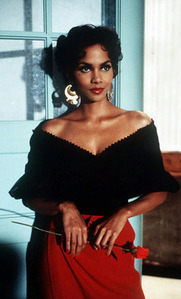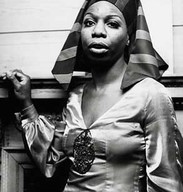In the short story, "Snakes", the way in which Lydia attempts to control Tara's aesthetics and body in order to manipulate her gestures to a long history of white control of the black female aesthetic for purposes of dominance. As Barbara Christian points on in her text, Shadows Uplifted, several stereotypes concerning the Black female arose within literature during the time of slavery. These stereotypes greatly influenced white perception and treatment of the black female and were used to, "rationalize the institution of slavery" (Christian 9). Although certain personality traits were attached to each stereotype, the physical portrayal of the Black females playing each "role" were seen as the embodiment of these traits and, thus, became important symbols of inequality and black inferiority. The stereotypes that arose during this time did not die with the end of slavery, and were later used to legitimize the poor treatment of the Black female and also to establish her as less than human, and can still be seen in different types of media to this day.

THE MAMMY: The Mammy was a construct of the Antebellum South that directly contrasted the image of the beautiful white "lady". In order to legitimize slavery, she was seen as the happy maid that is wise, and loyal to the white family, loving the master's children more than her own (Christian 12). Her physical characteristics are described by Christian as follows,“she is black in color as well as race and fat, with enormous breasts..her head is perpetually covered with her trademark kerchief to hid the kinky hair that marks her ugly” (11-12). Her kinky hair is important as it helps to keep her highly a-sexual, an important trait for the mammy. The mammy was a prevalent stereotype, and “Although the black woman is seldom focused on in antebellum literature, she almost always appears in the background as the contented and loyal mammy” (Christian 11). The portrayal of the mammy as contented and loyal is important as it helps to legitimize slavery and support the white fantasy of the "South's public dream" (12).

THE JEZEBEL: The Jezebel, also known as the "loose woman", was a stereotype that was perhaps as prevalent as the portrayal of the mammy. In stark contrast to the chaste white woman, "the crux of the 'loose woman' image is the belief that black women, unlike white women, craved sex inordinately.” (Christian 13) The Jezebel not only created an animalistic portrayal of the Black female, but also helped to support the belief that because of their inherently sexual nature, they were impossible to rape. The Jezebel is physically described by Christian as, “she is good looking and passionate, but never beautiful, for her animal nature rather than her human qualities are foremost in her makeup. She ensnares men with her body rather than uplifting them with her beauty” (Christian 15). This shows the way in which the Jezebel both animalized and demonized the Black female, while simultaneously turning the white wives of the men that she has "ensnared" against her. This image shown to the left is of Dorothy Dandrige who played a type of overtly sexual Jezebel figure in the film adaptation of the Broadway "Carmen Jones". Although this is not a movie about a black female "ensnaring" white men, and is perhaps a type of proud reclaiming of the stereotype, Dandrige fits the physical description of the Jezebel as, "brown-skinned, rather than black, and voluptuous, rather than fat, and she possesses a sensuous mouth and a high behind” (Christian 15)

THE MULATTA: The image of the Mulatta is not as prevalent within Antebellum literature or, for that matter, media in general as it serves as proof of miscegenation. However, when the image does rear its head as in the case of Cora Munro from the novel The Last of the Mohicans,"the mulatta is tragic. Often she is shown as caught between two worlds, and since she is obviously the result of an illicit relationship, she suffers from a melancholy of the blood that inevitably leads to tragedy” (Christian 16). This portrayal, perhaps, served as a type of "warning" of the negative impact that the mixing of races could have. The image used to the left is of the actress chosen to portray Cora Munro in the film adaptation of Last of the Mohicans, an "octaroon" character whose life ends in tragedy as most "Mulatta"'s tended to when portrayed.

THE CONJURE WOMAN: Perhaps the most elusive of all the stereotypes, the conjure woman, "incorporates the signs of traditional African religions that the southern gentry pointed to as dark and evil, heathen forces" (Christian 16). The ultimate rationalization of slavery, her image served to portray the institution as positive for the slaves as it removed them from their pagan pasts and introduced them to Christianity (Christian 16). The image to the left is of Nina Simone, a prominent jazz musician and human rights activist who, in a time of pressure for African American to embrace the physical and social aspects of "whiteness", fought to preserve and to reclaim the image of the "conjure woman". Interestingly, as Christian points out, the conjure woman was also the only stereotype in which the Black female is given some respect as white owners often feared her; treating her with awe (17).
This history of white control of the black female aesthetic is not one that was short lived. In fact, many of these stereotypes still exist. Additionally, as evidenced in "Snakes", the method of seeking domination over the Black female body is not one that has completely vanished.
In what forms of media do we still see this type of aesthetic control? What are some examples of these stereotypes that we still see today?
To see a video of the cinematic history of the Mammy, click Read More




